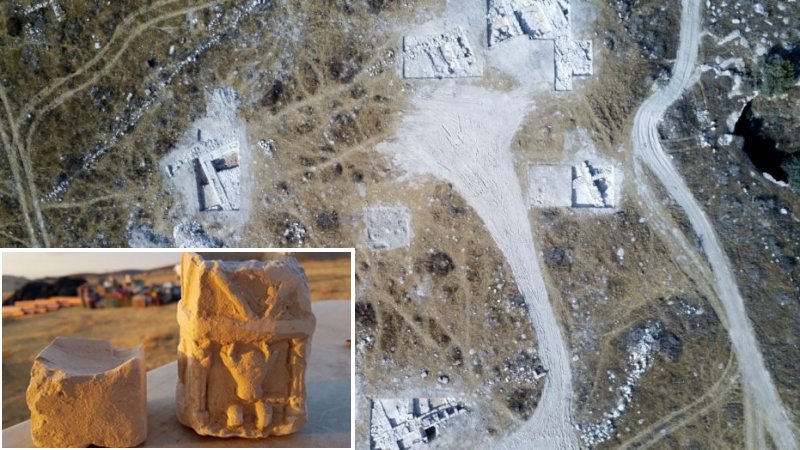AncientPages.com - A large mysterious ancient structure has been discovered at the center of a military training area in the in the Lachish region, in Israel.
The discovery was made with the help of camera-equipped drones. The structure was excavated by experts from the Israel Antiquities Authority and the Hebrew University of Jerusalem.
Area of the large structure, possibly a temple or palace, uncovered in the dig. Image credit: Dane Christensen
The structure, which could be either a palace or temple dates back to the Hellenistic period, when Greek influences were strong in the region. Two stone incense altars were discovered in one of the rooms.
One of them, bearing the carved image of a bull, is depicted as standing in what is apparently the façade of a temple adorned with magnificent columns. According to researchers the bull may have symbolized a deity worshipped by the Idumeans.
Remains of the structure indicate that it was intentionally dismantled, possibly by the Hasmoneans. Image credit: Dane Christensen
“If this was indeed an Idumean palace or temple, it is a rare and exciting find – similar structures in this country can be counted on the fingers of one hand. It seems that the building was intentionally dismantled, possibly during the Hasmonean conquest of the region,” excavation directors, Dr. Oren Gutfeld of the Hebrew University, and Pablo Betzer and Michal Haber of the Israel Antiquities Authority said in a statement.
Cultic vessels uncovered in one of the structure’s rooms. Image credit: Clara Amit, Israel Antiquities Authority
The Idumeans were a Semitic people originating in southern Jordan who settled in the Judean foothills.
At the site, archaeologists found also pottery vessels, well painted bowls, juglets and oil lamps.
Also found at the site are numerous underground spaces, used as quarries or to house ritual baths (mikvaot), oil presses and dovecotes. Hiding tunnels from the time of the Jewish revolts against the Romans were also discovered; one of these contained an intact cooking pot from the time of the Bar Kokhba Revolt (132–135 CE).
Two cultic incense altars found in one of the rooms of the structure. Image credit: Michal Haber, Israel Antiquities Authority
Calling the discovery, a research breakthrough, the archaeologists say: “This technology helped us choose where to focus our excavation probes, and, indeed, it very quickly emerged that this was in fact a unique discovery. We hope that our continued excavation of the site in the spring will uncover more of the story told here.”
AncientPages.com
